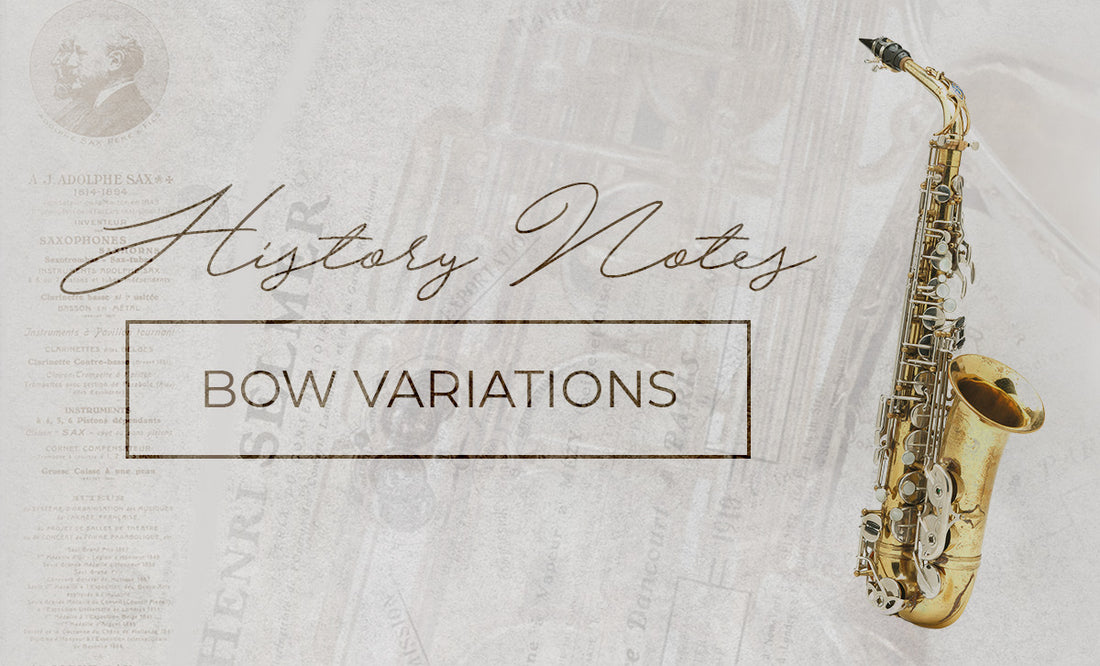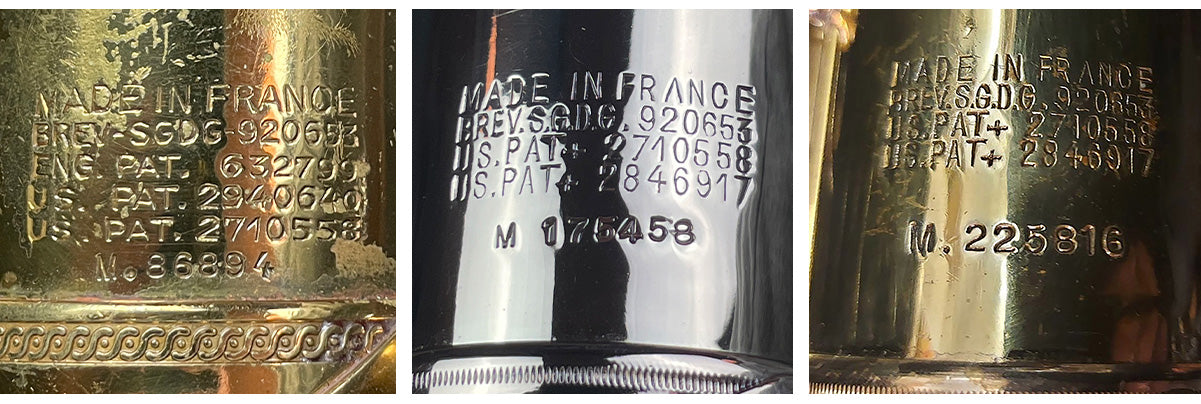History Notes: Mark VI bow variations

“If you know anything about Mark VI altos, you've probably heard the term short bow, medium bow, or long bow. So let's just quickly go over. There are five main variations. You may not be aware of all of them.
From the beginning of the Mark VI range up to the 75,000 serial range, these are known as the short bow. An easy way to tell is if you look at the back of the saxophone at the bottom where the bow and body and bell connect, you'll see that the bow bell band and the bow body band are almost identical. The bell is just a little above, but they're very similar, very close to being straight across from each other.
From 75,000 to 87,000 is the era known as the medium bow. Here the bow bell band is a little higher, but it still overlaps.
From 87,000 to 136,000 this is known as the long bow. Here, the bow bell band is much higher, so there's no overlap between the two.
From 136 to 201, this is also known as the medium bow. I call it the medium bow type 2. It's a bit of a reversion back. There is some overlap, and that remained up until 201,000, in which there was a very slight difference. I call this the medium bow version 3.

So very difficult to tell the difference just by looking at them between version 2 and version 3. It's too bad Selmer Paris didn't label them right on the bell as to say short bow or medium bow. I mean, that would have been too easy. But here's the fun part: that's exactly what they did.
At the very beginning of the Mark VI alto, if you look at the bell stamp, there is not a registration mark on it, which makes sense. It takes a couple of years to get designs registered and such. So from roughly 55,000 to 60,000, there is no registration mark on the bell of the alto.
At around 60,000, it appears: it's just a R with a circle. We're all familiar with that. From 60,000 to 75,000, the short bow, that is the stamp.
At 75,000, when the medium bow happens, the circle R remains, but there's a little circle to the left and another circle to the right. That indicates the medium bow.
At 87,000, those two circles disappear and are replaced by a tilde. Just think of it as a little squiggle, if it was on a clock at the 3 o'clock and the 9 o'clock point. So the circle R with two squiggles represents a long bow.
At 136,000, this is the medium bow type 2, a third squiggle is added. So on the clock, it's at 3, 6, and 9:00 PM. So from 136 to 201, altos have this symbol. That's the medium bow type 2.
At 201 for the medium bow type 3, they get rid of that all together, and it's just a circle R again.

So there are a few exceptions, of course. The low A altos are different. They just keep the circle R throughout the range, and they actually keep the long bow up until about 188,000. Another small variation that I haven't quite figured out yet is there's a couple, maybe a couple of hundred in the 92,000 range that go back to the two circles. But, I'll figure that out.
So let's review. Short bow will either have no registration mark or just a circle R. Medium bow from 75 to 87: registration mark and two circles. Long bow from 87 to 136: registration mark, two squiggles. Medium bow type 2 from 136 to 201: registration mark, three squiggles. And medium bow type 3, after 201 000 serial number: registration mark with no squiggles.
Now, this describes the relationship between the bow and the bell. And it makes sense. If you're in the factory and your job is to put these two pieces together, you need to know which part goes with which part. It seems like an obvious thing that they made a mark there to help the people put the right parts together.
Let's briefly talk about the relationship between the bow and the body, because there's also an indicator here, and this indicator is in the serial number prefix. There are five variations of bow-bell, and within those five variations there are three variations of bow-body. The first two variations have an M with a large dot. For the third and fourth variations, the prefix is just an M. And at the end of the fourth variation and the fifth variation, which indicates that the bow-body relationship changed in the middle of the type 2, it goes to an M with a small dot.

So there you have it. Now, just by looking at the bell, you can tell exactly what type of bow variation of Mark VI you have."
► See all episodes on YouTube
► Listen to History Notes podcast
► Access the serial number table